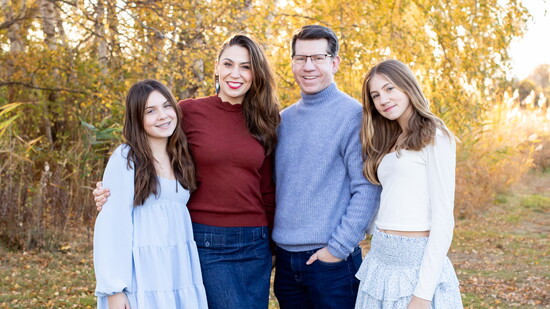There are few things that bring families together quite like quality children’s television. These series often represent some of our earliest memories, and watching them is an experience that has the power to foster connection between family members, introduce academic and emotional concepts, and make kids and adults alike stop and smile. Creating children’s programming that does all of this is a passion for local couple Eric and Mary Jacobson. They met on the set of Sesame Street, where Eric is still a performer, puppeteering iconic characters like Grover and Bert. When they connected over the craft services table, Mary was interning with Sesame Workshop after taking a children’s television writing class in college. “It was taught by someone who wrote on several international co-productions of Sesame Street, and something just stuck,” Mary recalls. “I just said that’s what I want to do.”
After her internship at Sesame Workshop, Mary went on to become a production assistant at Discovery Kids, then worked in on-air promos for Nick Jr. “Nickelodeon was really my master class,” she says. “I learned about directing, writing, producing, and working with both kids and adults. It really helped me grow.” Eric and Mary got married, and when their first child was born, Mary transitioned to freelancing, and has since written for shows like Daniel Tiger’s Neighborhood and Gabby’s Dollhouse. (Their two children are now 15 and 13.) She also does writing and voice directing, on projects including children’s podcasts and the screen-free audio player Tonies. Eric has remained a key member of the Sesame Street team, taking on Oscar the Grouch after his original performer, Carroll Spinney, retired in 2018. (He also performs with The Muppets, and is the principal performer for Fozzie Bear, Miss Piggy, Animal, and Sam the Eagle.)
With so much hands-on experience in the children’s television space, both Eric and Mary have a unique appreciation for the role children’s television plays in shaping young minds. “Social-emotional skills are a real focus for Sesame Street today, in addition to letter and number literacy,” explains Eric. “It’s something I’m proud to be associated with, to continue this legacy of a show and to be able to perform these characters that are icons in our culture.” Mary writes for PBS shows like Phoebe & Jay and Skillsville that teach many similar concepts, and she loves it when she can do so through humor. “Especially now, there’s more anxiety and stress for kids,” she says. “So when I get a chance, I feel the need to push the funny in my writing. Even on a curriculum-based show, if we can do it in a clever way, where they’re laughing and enjoying while they’re learning, that’s the secret sauce for me.”
One of the rewarding parts of creating children’s television is fostering your own inner child in the process. “I think the best advice I could give anyone who wants to [work in this field] is just to do what we did and never grow up,” says Eric. “It’s just carrying your childhood, your innocence, and your sense of playfulness throughout your life and never letting go of that.” Mary couldn’t agree more. “Life should be silly and playful,” she says. It’s why she works so hard to make kids laugh—to teach them what the best of life can look like. And they both say spending time with their family, from playing on the floor when their children were little to running lines for their high school plays to crafting and playing board games together—is a touchstone, too. “Staying creative, and finding joy with our family, has really helped us stay in touch with our inner children,” says Mary.
Seeing the effect their work has on children is unquestionably powerful, too. Even though puppeteering and writing are, by their nature, less visible roles, whenever they get a chance to hear from viewers, they are deeply moved. “I’ve heard people say something like the Daniel Tiger hospital episode we wrote helped when their kid had to go to the hospital, and that’s always satisfying,” says Mary. “It’s incredibly rewarding to hear that someone loves a particular episode or a character I play,” agrees Eric. “I’m very grateful for what children’s television gave me as a child, and as an adult, it’s now given me a career. It means the world to me.”
So the next time you sit down with a child in your life to watch a show together, think of Eric and Mary and the power of children’s TV. “Entertainment should bring families together, as opposed to using screens to put up walls,” says Eric. “The joy that comes from knowing I have affected people’s lives, even if just in a small way, fills me up with the most pride.”
"Even on a curriculum-based show, if we can do it in a clever way, that’s the secret sauce for me.”
“It’s [about] carrying your childhood, your innocence, and your sense of playfulness throughout your life and never letting go of that.”
